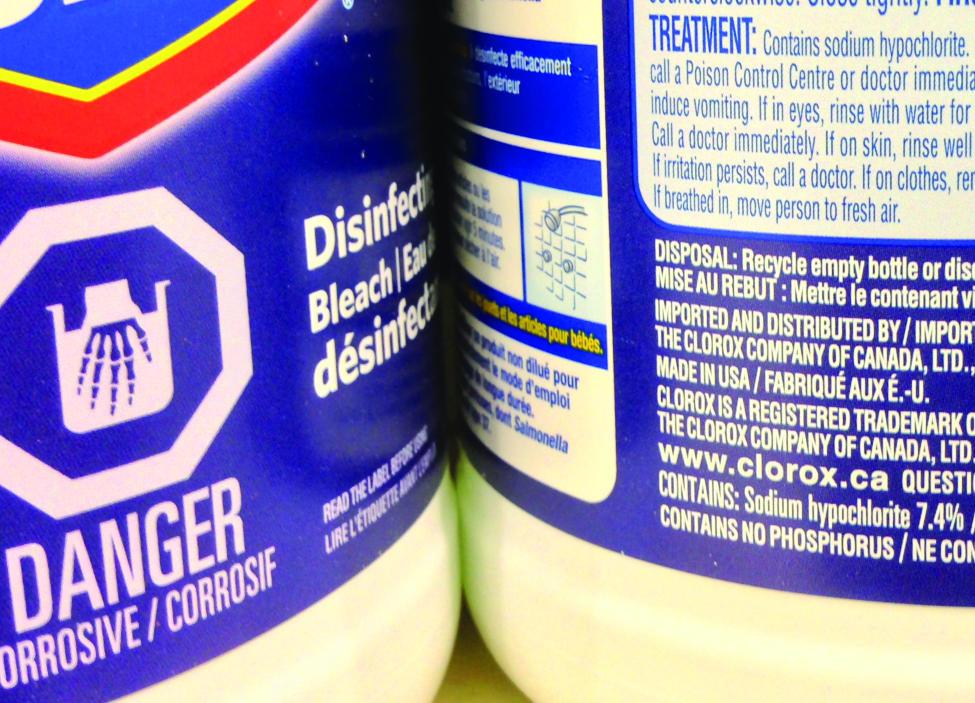While molarity is the most commonly used unit of concentration in chemistry – it links directly to stoichiometric calculations – other units of concentration exist and are used occasionally in lab, or more often in industrial settings.
Mass Percentage (%w/w)
Percentages are commonly used to express the composition of mixtures, including solutions. The mass percentage of a solution component is defined as the ratio of the component’s mass to the solution’s mass, expressed as a percentage:
$$\text{mass percentage} (\%w/w) = \frac{\text{mass of solute}}{\text{mass of solution}} \times 100\% $$
Note that the denominator is mass of solution, not mass of solvent. For dilute solutions (less than ~5% concentration) of a single component, the solute mass may not be a significant contribution, so you can approximate the solution mass by using the solvent mass.
Mass percentage is also referred to by similar names such as percent mass, percent weight, weight/weight percent, or percent weight by weight, %w/w, %m/m, or wt%), and other variations on this theme. The most common symbol for mass percentage is simply the percent sign, %, although more detailed symbols are often used including %mass, %weight, %m/m, and (%w/w). Use of these more detailed symbols can prevent confusion of mass percentages with other types of percentages, such as volume percentages.
Mass percentages are popular concentration units for consumer products. The label of a typical liquid bleach bottle(shown below) cites the concentration of its active ingredient, sodium hypochlorite (NaOCl), as being 7.4%. A 100.0 g sample of bleach would therefore contain 7.4 g of NaOCl.

Calculation of Percent by Mass (%w/w)
A 5.0 g sample of spinal fluid contains 3.75 mg (0.00375 g) of glucose. What is the percent by mass of glucose in spinal fluid?
Solution
The spinal fluid sample contains roughly 4 mg of glucose in 5000 mg of fluid, so the mass fraction of glucose should be a bit less than one part in 1000, or about 0.1%. Substituting the given masses into the equation defining mass percentage yields: $$ \text{% glucose} = \frac{3.75\;\text{mg glucose}\times \frac{1\,g}{1000\,mg}}{5.0\,g\,\text{spinal fluid}} = 0.075\% $$ The computed mass percentage agrees with our rough estimate (it’s a bit less than 0.1%).
Note that while any mass unit may be used to compute a mass percentage (mg, g, kg, oz, and so on), the same unit must be used for both the solute and the solution so that the mass units cancel, yielding a dimensionless ratio. In this case, the solute mass unit in the numerator was converted from mg to g to match the units in the denominator. Alternatively, the spinal fluid mass unit in the denominator could have been converted from g to mg instead. As long as identical mass units are used for both solute and solution, the computed mass percentage will be correct.
Check Your Learning
Calculations using Mass Percentage
“Concentrated” hydrochloric acid is an aqueous solution of 37.2% HCl that is commonly used as a laboratory reagent. The density of this solution is 1.19 g/mL. What mass of HCl is contained in 0.500 L of this solution?
Solution
The HCl concentration is near 40%, so a 100-g portion of this solution would contain about 40 g of HCl. Since the solution density isn’t greatly different from that of water (1 g/mL), a reasonable estimate of the HCl mass in 500 g (0.5 L) of the solution is about five times greater than that in a 100 g portion, or 5 × 40 = 200 g. In order to derive the mass of solute in a solution from its mass percentage, the mass of the solution must be known. Using the solution density given, convert the solution’s volume to mass, and then use the given mass percentage to calculate the solute mass. This mathematical approach is outlined in this flowchart:
For proper unit cancellation, the 0.500-L volume is converted into 500 mL, and the mass percentage is expressed as a ratio, 37.2 g HCl/100 g solution: